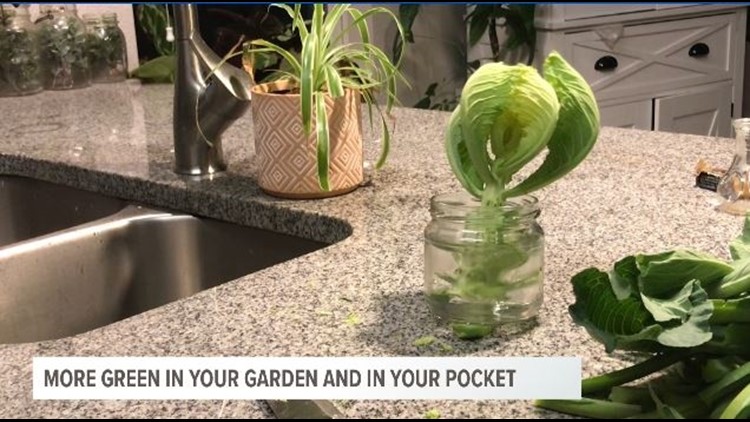February 2022 ended with record heat in Columbia. The city reported its earliest 85F day on record on February 24th. The warmer weather has many gardeners thinking about spring, which is exciting and it doesn't have to be expensive.
Broccoli, along with other winter greens like cabbage and collards are sometimes thought of as "a pick once and toss" kind of plant, but they can provide multiple harvests if cut properly. The leaves on collards and cabbage can be picked individually throughout or the plant can be harvested all at the same time. Harvesting individual leaves will keep the plant intact and growing, but leafy greens like lettuce, cabbage, and collards will sprout new leaves if the base of the stem is left behind.
This method also works for broccoli. Cut just the top of the stalk off when broccoli is producing florets. Smaller florets should develop in a few weeks from the sides on top of the base of the leaves. The broccoli seedlings we planted in October 2021 were ready for their first harvest in December, and the second harvest was ready about 2 months later. Once gardeners are finished harvesting broccoli heads, or if the florets are elongated and not desirable for eating, feel free to pick off the broccoli leaves. The leaves are delicious and can be taken off while the florets flower and produce seeds that can be saved for the fall garden.
On our Facebook page, WLTX Gandy's Gardeners, many gardeners in the midlands are growing new plants using the kitchen scraps left behind from leafy greens. Cut off the desirable leaves for a meal and leave the stem intact. Place the remaining stem in a jar of water with the bottom of the stem submerged in water. In a week or 2, new roots should develop and it can be planted in dirt and provide another round of produce.
A big benefit to winter gardening is how low maintenance these plants are. Bugs are rarely an issue and cooler temperatures prevent rapid evaporation, which means less watering than during the summertime. Most winter greens will grow well in raised beds in the garden, but are small enough to grow in pots or even indoors by a sunny window. It's possible for anyone to grow these greens in the cooler months. Protect winter garden plants when temperatures drop below the mid 20s so they stay green and healthy for harvest.
These ideas will add green to the garden and save some green in your wallet! Our Facebook group is open to all garden enthusiasts. Join our group and share your questions, advice, and photos!



